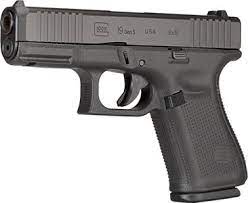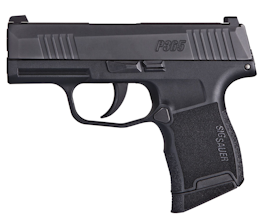Quick Links
McKinney Firearms Training, LLC
I have long been of the opinion that it was not my place to try to push you toward one brand or another, but let the consumer choose. The problem is that most people new to handguns don't know enough about the issues to discriminate between brands, or dismiss the claims of manufacturers or salesmen. In fact, my students often look to me for a recommendation, with the understanding that I don't sell guns, or get any commission. So, here goes.
I have had thousands of students in classes and on a firing line. I have seen guns that malfunction more often than they should, guns that malfunctioned very frequently, and those that never did so. I have also seen firsthand the problems that new shooters experienced with even well-known brands. Despite the competing claims, there are certain features that a gun must have, in this order:
The list of industrial grade guns that meet these requirements is quite short, and corresponds with the brands used by the overwhelming majority of law enforcement agencies and military services. That list includes
Glock
Smith & Wesson
SIG Sauer
Heckler & Koch
CZ
While Beretta has a storied history in military service, I have hesitated in the past to recommend the 92FS, also known as the M9. The combination safety-decocker is tricky to use, although newer models in the Beretta line have dropped that feature.
Smith & Wesson is a very old, mainline firm, famous for somewhat expensive revolvers and 1911 pistols. They do have some entry-level offerings, but I would avoid those. Their professional line is branded "M&P" (Military and Police). These are quite good, and sometimes used by law enforcement agencies.
SIG Sauer sells a bewildering array of models, with each model having many variations, often with different features. They are high quality, and used by military forces and special operators around the world, including at the Vatican.
Glock sells essentially one model, in many different calibers and sizes, and every model number uniquely identifies one gun with certain defined characteristics.
Inasmuch as Glock has an unmatched reputation for reliability, is used by 65% of law enforcement professionals nationwide (and around the world), and has the most aftermarket support of any brand, it is my recommendation that a new shooter cannot go wrong with this as your first gun. The models I recommend are
 Glock 19 (9mm compact, not small, but still concealable). The most popular first gun in America.
Glock 19 (9mm compact, not small, but still concealable). The most popular first gun in America.
Glock 17 (9mm duty size, outstanding for home defense, and used by most police depts).
Glock 26 (9mm sub-compact, concealable). Double-stack.
Glock 43X (9mm sub-compact, concealable). Single-stack.
Additional choices, based on my experience:
CZ P10 These are exceptional pistols, built by the company that virtually dominates the competition shooter market.
P10F = Duty Size
P10C = Compact Size
P10S = Sub-Compact Size (virtually compact size)
P10M = Micro Size (actually sub-compact)

The SIG Sauer P-365 is one of the hottest guns on the market right now. It is very small, but with a 12-round capacity. The recoil is a little snappy, but not unreasonably so. The sights are terrific, it has a crisp trigger, and it is quite accurate and controllable. It is also available as an Optics-Ready model. This would be a great choice for a purse gun. If you buy it Optics-Installed, remove the optic for the first two months. You can thank me later.
These are all 9mm caliber. This is far and away the most versatile and manageable caliber for new shooters. At the same time, it is used by the FBI and many police agencies.
Racking the slide is often a problem, but I find that most people who have trouble racking the slide simply don't know the right technique. I can fix that.
You may notice that none of these are .380 caliber. Glock does make one (G42), but police don't carry those, as they often don't have sufficient stopping power at a distance. Hope for the best, but be prepared for the worst. The best choice of handgun is usually the longest, heaviest gun that suits your purpose. A pocket gun, while a useful tool, should not be your primary weapon.
Do not buy a handgun without handling it. Go to a gun shop or gunshow. Consider these features:
Revolvers are sometimes appealing to people due to their spartan simplicity, but do not make that mistake. Revolvers are much harder to learn on than a semi-automatic, and require considerable experience to shoot well. I like revolvers, and often carry one, but they are not for new shooters. Get training on it. You have been warned.
Handguns for the Physically Challenged.
Home Defense Option: AR-15 Pistol.
Also:
Concealed Carry for Women of All Body Types.
See the Gun Links pages for reviews and other resources.